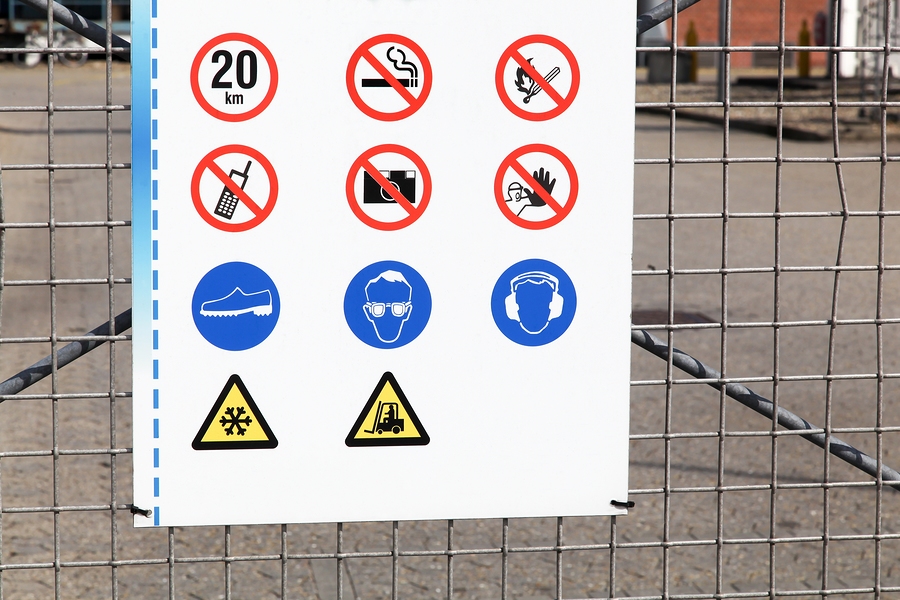In any factory, the first priority should always be the safety of its workers. Every factory environment, regardless of its scale or industry, poses unique risks to its employees. Properly implemented safety measures are essential to prevent accidents and injuries that can otherwise be catastrophic. Safety Signs and Supplies play a pivotal role in mitigating these risks, ensuring that workers are aware of potential hazards and know how to react in emergency situations.
The Crucial Role of Safety Signs in Preventing Accidents
Safety signs are not just decorative pieces placed around a factory; they are essential components of a well-thought-out safety strategy. These signs provide immediate, visible warnings of potential dangers, guiding workers to navigate safely through hazardous areas. Whether it’s a simple “Caution” sign near machinery or an emergency exit notice, these signals are constant reminders to stay alert. Without these signs, workers would be less prepared to react appropriately in critical situations.
Moreover, safety signs also contribute to maintaining order in workplaces by clearly demarcating safe zones and hazardous areas. Clear instructions, such as “Wear Safety Goggles” or “Authorized Personnel Only,” reduce the likelihood of accidents occurring due to human error or oversight. When integrated properly into factory layouts, safety signs help minimise confusion and promote safe behaviour at all times.
Variety of Safety Supplies to Enhance Worker Protection
While signs are crucial for communicating risks, Safety Supplies complement these warnings by providing the physical tools necessary to prevent injury. Personal protective equipment (PPE), including gloves, helmets, safety goggles, and high-visibility vests, are the first line of defence for workers facing dangerous machinery or chemicals. Having an adequate supply of these protective items on hand is essential for every factory.
A well-stocked inventory of safety supplies ensures that workers are adequately equipped to handle any task, reducing the risk of injury caused by exposure to hazards. These supplies, when maintained and updated regularly, protect workers not just from immediate physical dangers but also from long-term health risks associated with certain factory environments, like chemical exposure or repetitive strain injuries.
Creating a Safety-Conscious Culture
The importance of safety signs and supplies extends beyond their immediate function; they are integral to fostering a safety-conscious culture within the workplace. Consistently visible reminders and readily available protective gear ensure that safety is never overlooked. When employees see their employer prioritising their safety, it encourages them to take their own precautions seriously.
Training sessions are another key element that works hand in hand with signs and safety supplies. Factory workers should not only be aware of the existence of safety measures but also understand how to use them effectively. Regular safety drills, for example, help ensure that employees are familiar with evacuation procedures, the correct use of PPE, and how to respond in an emergency.
Legal Compliance and Safety Standards
In many countries, factory safety standards are governed by strict regulations that mandate the use of specific safety signs and supplies. Compliance with these laws is not just a legal requirement but a moral obligation for any factory owner. In the UK, health and safety laws under the Health and Safety at Work Act 1974 and the Control of Substances Hazardous to Health (COSHH) regulations dictate the implementation of safety measures, including the proper use of signs and safety supplies.
Failing to meet these standards can result in hefty fines, legal actions, or even the shutdown of a facility. In extreme cases, neglecting safety measures can lead to severe injuries or fatalities, further highlighting the importance of strict adherence to safety guidelines. Maintaining adequate signage and a steady supply of protective gear ensures that factories operate legally and responsibly.
Conclusion
Safety signs and supplies are far from mere formalities within a factory environment—they are critical components that safeguard the lives of workers. By combining clear communication through signage with practical safety equipment, factory environments can significantly reduce the risk of accidents and promote a culture of safety and responsibility. Not only do these measures ensure legal compliance, but they also foster trust and productivity among employees, making safety a priority that everyone can stand behind.

